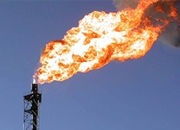This is the result of a joint effort between Mexican state oil company Petróleos Mexicanos (Pemex) and Statoil to cut CO2-emissions through curbing gas flaring. This is the first gas flaring reduction project in the Mexican oil industry registered as a CDM.
The Kyoto protocol opens up to invest in emission reduction projects in countries without mandatory emission reduction goals that have subscribed effective climate commitments (i.e. Mexico), and to earn certified emissions reductions (CERs) which then become tradable.
“We are very satisfied with this achievement. By combining our experience and competence we have been able to develop an exciting and cost efficient project to cut CO2-emissions”, says Geir Heitmann, vice president for the Power and emissions unit in Statoil.
“Obtaining registration under the CDM of our Tres Hermanos project in collaboration with Statoil is an achievement and very important for Pemex. It demonstrates our commitment to reducing greenhouse gas emissions and sets the basis for the development of other reduction projects in the Northern region," says Juan Arturo Hernández Carrera, vice president for the Northern Region in Pemex Exploration and Production.
Reducing gas flaring
Pemex and Statoil started a pioneering collaboration back in 2004 to identify CDM projects, particularly in gas flaring reduction. This way Pemex committed to voluntarily reduce carbon emissions and improve its energy efficiency.
Statoil would bring its technical expertise and experience, gained in the Norwegian Continental Shelf. In return Statoil could buy from Pemex the CERs obtained by the project.
This CDM-project is part of the Tres Hermanos oil field, situated in Mexico’s Veracruz state, near the city of Poza Rica. Here Pemex has been producing oil for more than six decades.
Gas to the local market
The associated gas separated from the oil is today not utilized, and is burnt in several flaring systems across the tropical plains because of the marginal economic sense of investing in facilities in order to reduce the flaring.
The aim of the CDM project is to eliminate three of the gas flare batteries and to install a new gas processing and treatment plant. In addition, the plan is to build the necessary gas pipelines to bring the recovered gas to the local market, rather that being burnt on the field.
By doing this CDM project, Pemex expects to avoid emitting an average of 83,000 tonnes of CO2 per year, over a ten year period, and to receive the same amount of CERs from the United Nations.
Pemex will now start the tendering process to sign the Engineering, Procurement and Construction (EPC) contract for this project on January 2011.
Pemex will solely invest, own and operate the facility, which is expected to start up at the end of the next year. Statoil has been responsible of preparing the necessary documentation to obtain the CDM registration by UN.
Statoil will also make sure the project approves the yearly verifications and receives the certified emission reductions to be bought from Pemex.
Facts about the Kyoto Mechanism
Under the Kyoto Protocol (1997), a number of countries (i.e. Norway) accepted obligations to achieve specific reductions in greenhouse gas emissions (GHG) within a specific period, by setting limits or “caps”.
Because GHG emissions are a global problem, the protocol provides three mechanisms which allow industrial countries to meet their obligations. One of them, the Clean Development Mechanism (CDM) allows to invest in emission reduction projects in nations without such commitments (i.e. Mexico), and to earn certified emissions reductions (CERs or “carbon credits”), which are tradable and can be used to comply with their established limits. Under the CDM, every ton of CO2 avoided results in one CER issued by UN.
In order to be registered as a CDM, and to receive CERs, a project must first comply and follow specific and strict rules imposed by the UN. The goal is to achieve real, measurable and cost-effective cross-national reductions and, at the same time, to support technology transfer and sustainable development in the host country.
The UN approval process and the way forward
In order to receive registration as a CDM, a project must follow a dedicated process and rules designed by UN: (i) to prepare all the necessary documentation using a valid methodology, (ii) to pass the validation exam from an independent third party, authorized by UN, and finally (iii) to pass the final registration process, where the Executive Board (EB) of the United Nations Framework Convention on Climate Change (UNFCCC) analyses in detailed the proposed project activity, and communicates the final decision.
After registration, and once the physical project is running, regular Verification process by third parties will follow, before UN can issue the tradable CERs, to make sure the reductions are real, measurable and according to the CDM rules.
05 Января 2026 | понедельник | 14:08


